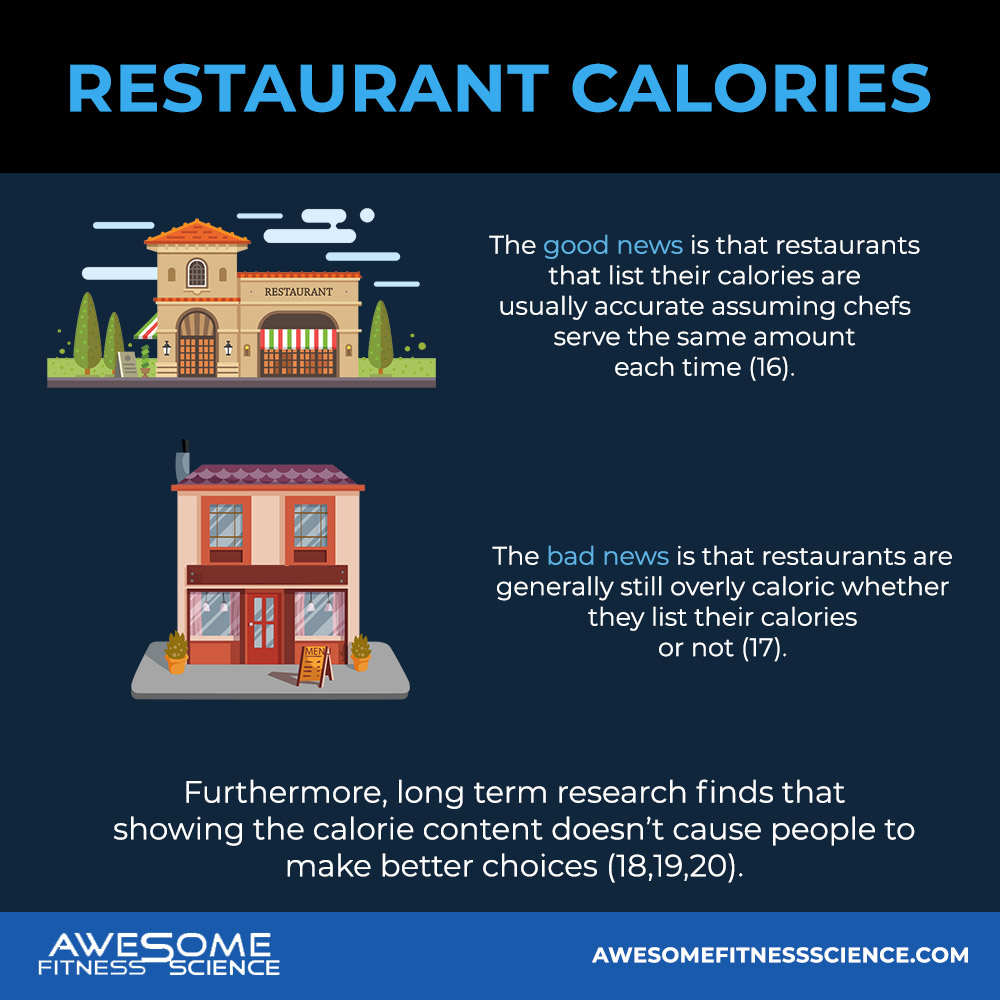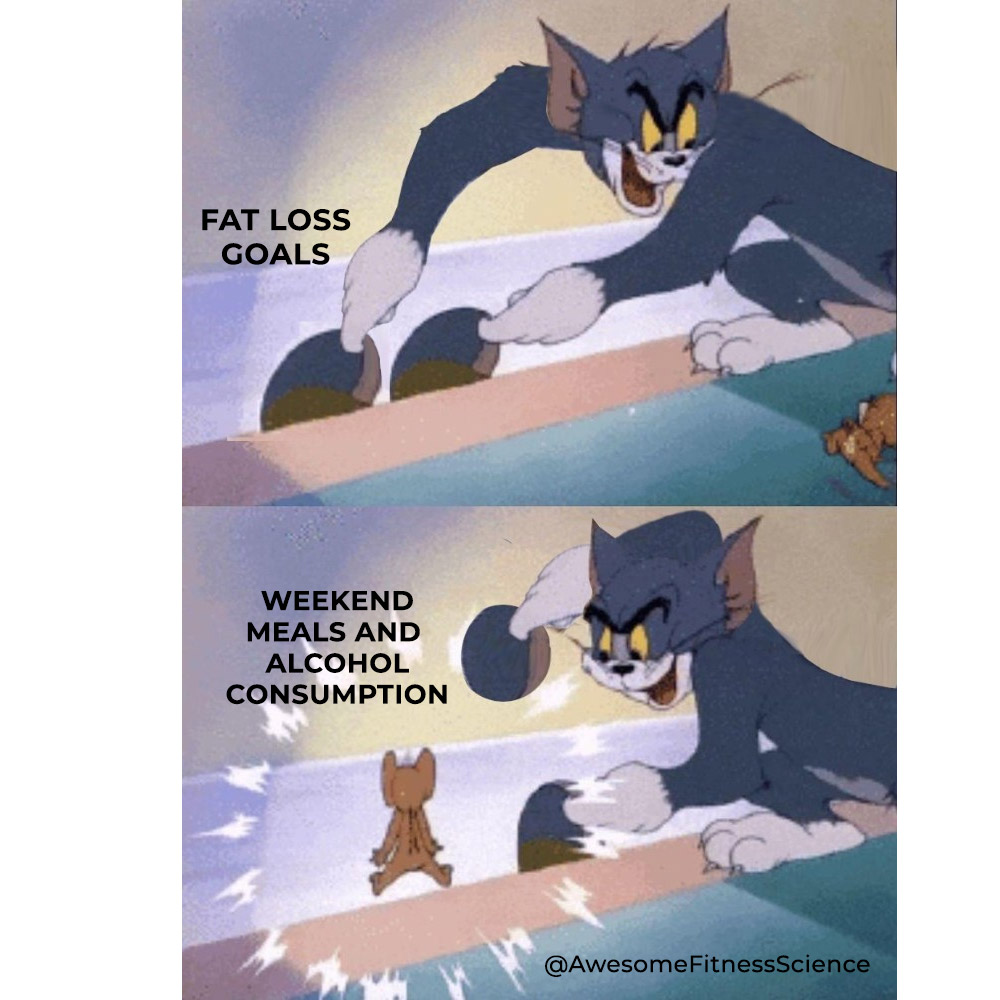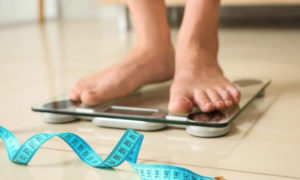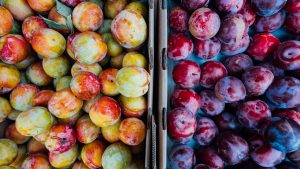
The Key to Losing Fat and Keeping it Off
Losing weight is already hard enough, but keeping the weight off once you lose it is a whole-nother beast of a challenge.

Do you keep gaining weight or struggle to lose it? It’s because you eat too much. No really, that’s what it comes down to.
I know I sound like a dick, but let me explain. First, you must understand a thing called energy balance aka calories in vs calories out.
Simply put, you gain weight when you eat more food (calories) than you can burn off and you lose weight when you eat less food than you burn off over time. This is the unchanging law of physics that we are all bound to. In other words, it will be true no matter who you are.
Calories always matter. Yes, other things matter too, but they largely matter because they influence your calories.
Thus, no matter how much you’re struggling with your weight, you’re where you’re at because you eat too much. It’s not entirely your fault either. There are a number of conspiring forces that cause more food to enter your mouth.
These forces encourage you to eat and eat and eat until you resemble Bruce Bogtrotter from Matilda (you’re a real one if you get that reference).
The first thing working against you is human nature. Intrinsically, you and I are flawed creatures. We make mistakes and/or lie to ourselves. Thus, objective research finds people are notorious at misreporting calories whether on purpose or simply from user error (1-6,10).
Unfortunately, what you don’t report your body still registers. On average, people misreport up to 50% and in some cases 1000 or more calories per day. Overweight people generally misreport more than leaner people. People also commonly misreport snacks or small bites, you know, those “harmless” nibbles that you don’t realize add up quickly (10). I’m not trying to hurt any feelings, but it’s simply the hard truth people need to hear so they can either be more careful or stop leaving things out of their food logs.
Cause remember, what you eat mindlessly still gets counted by your body.
If you intended to or only reported eating 1700 calories, but 2700 ended in your mouth each day, your weight ain’t going to be looking too good.
To put things into further perspective, we even have research finding registered dieticians misreporting their calories (7). So dorks who go to school for over 8 years to become a pinnacle nutrition professional are not immune to misreporting even when doing it daily.
So for starters, if you’re tracking your food, track all of it daily, not just when you feel like it.
Furthermore, tracking is good for food accountability especially when done properly (11). Take tracking seriously and log all your food when you’re doing it.
Without even an attempt to track, you’re now at the mercy of 21st century food environment which is beyond grim for your love handles. Read on to find out.
Calorie density refers to how caloric something is relative to it’s volume. The more calorically dense something is, the more calories it contains relative to it’s size. For example, broccoli isn’t calorically dense. It contains very few calories relative to higher volume.
An apple fritter from Krispy Kreme on the other hand is extremely calorie dense. One of these is 350 calories yet feels like it disappeared into a random vortex in your body.

Tons of foods are calorie dense. French fries, mozzarella sticks, Oreos, chips, cookies, pizza, mayonnaise, alcohol, and ice cream are all calorie dense foods. You can consume a small serving, not get full, and feel like you didn’t eat much, but unknowingly just swallowed down hundreds, if not thousands of storable calories from a snack or meal.
Furthermore, calorie dense foods aren’t only obvious junk food. Avocados, nuts, nut butters, olive oil, acai bowls, coconut, dried fruit, fruit juice, and granola bars are all highly calorie dense as well. They’re often more calorie dense than your traditional junk foods.
Something can seem healthy and be marketed as healthy, but not be fat loss friendly which doesn’t really make it healthy if you’re consuming a misguided amount. For example, 200 grams or one average avocado is close to 350 calories comparable to the apple fritter I mentioned earlier.
Didn’t know that did you?
Nowadays, food is more calorie dense thanks to human engineering. What’s arguably worst though is palatability which is simply a fancy word meaning how good something tastes.
Ideally, we’d eat foods that taste good enough to fulfill our reward system, but not so good that we can’t stop eating. Unfortunately, many products nowadays have the intent to make food override your self-control (8,9).
Companies religiously test different doses and ratios of sweet, salty, fatty, sugary, and/or crunchy variations to construct food so good, you keep wanting more. Like, do you think the CEO of Doritos really hopes his product satisfies you after 4 chips so you can stay lean?
No, he’s laughing in some ivory tower overseeing a legion of minions who meticulously create snacks that seduces your brain’s reward system, so you endlessly crave them. The more you munch, the more he laughs and profits.
This is not to say these foods are evil or can’t be part of your diet, but these foods come with intrinsic risk and aren’t designed to respect your weight loss goals. Overly palatable foods include donuts, chips, salted nuts, cookies, candy, fast food, common appetizers, or any food that’s stupidly difficult to stop eating after 1 bite.
If calorie density and palatability wasn’t bad enough, you know how to amplify an already highly caloric problem? Simple. Make it bigger and put it in a setting that encourages more eating.
That’s where restaurants and social gatherings come in. They have tons of hidden calories because the chef doesn’t give a flying fork about your weight loss goals. Chefs are trying to make delicious food and will use as much oil, butter, fat, cream, or sugar to do so.
They aren’t concerned about weighing out how much dressing is tossed in your salad and they are not looking to use zero calorie sweeteners when baking desserts.
In addition, food portions in products, fast food, and restaurants have increased when compared across many years (12,13,14). It’s only getting worse.
This actually distorts your perception of portions, so your brain gets accustomed to larger portions making you either less satisfied with smaller portions or unknowingly eating bigger ones (14,15). This is also why foreigners visiting America are dumbstruck by our portion sizes.
Grab my free guide on How To Enjoy Social Events While Dieting
The good news is that restaurants that list their calories are usually accurate (16). The bad news is that restaurants are generally still overly caloric whether they list their calories or not (17). Furthermore, long term research finds that showing the calorie content doesn’t cause people to make better choices (18,19,20).
Worthy of note, American, Chinese, Indian, Mexican, and Italian rank for the most caloric, while Greek, Thai, Japanese, and Vietnamese rank for the least (17).

Add in the weekend and social element and you have a recipe for piles of unrealized calories.
In fact, research finds many people can eat appropriately throughout the week, but their weekend eating patterns undid all their efforts and, in many cases, makes it worse causing net fat gain by Monday morning (21).
This is why after 5 days of sticking to your diet, a couple of indulgent days doesn’t seem like a big deal in theory. However, social settings and all the aforementioned factors are strong enough to screw your efforts over a short weekend.
People not only eat bigger portions on the weekends, but they tend to select higher calorie foods too (22).
You’re also surrounded by friends and family. You don’t want to be that person that orders a salad. Thus, in social settings, food intake skyrockets because the average person is too much of a wimp to go against peer pressure (23,24).

But wait, There’s more! Here are more research confirmed ways that cause us to unknowingly eat more than we realize.
You live in an environment and embody a brain that is easily swindled to eat more. It’s not entirely your fault, but then again, it is. The food still ends up in your mouth. This is not to say things are hopeless.
Your environment can be changed and your brain chemistry can change as well.
If you’re struggling with your weight, you should be monitoring your food closely, setting appropriate boundaries, being mindful of food choices along with portions, developing habits to rewire your behavior, exercising to help burn some calories, and getting professional support/accountability to make sure things go right.
1. Validate User, academic.oup.com/ajcn/article/71/1/130/4729298.
2. Buhl . “Unexplained Disturbance in Body Weight Regulation: Diagnostic Outcome Assessed by Doubly Labeled Water and Body Composition Analyses in Obese Patients Reporting Low Energy Intakes.” Journal of the American Dietetic Association, U.S. National Library of Medicine, pubmed.ncbi.nlm.nih.gov/7594141/.
3. Chandon, Pierre, and Brian Wansink. “Obesity and the Consumption Underestimation Bias.”
4. Mahabir . “Calorie Intake Misreporting by Diet Record and Food Frequency Questionnaire Compared to Doubly Labeled Water among Postmenopausal Women.” European Journal of Clinical Nutrition, U.S. National Library of Medicine, pubmed.ncbi.nlm.nih.gov/16391574/.
5. J;, Macdiarmid. “Assessing Dietary Intake: Who, What and Why of under-Reporting.” Nutrition Research Reviews, U.S. National Library of Medicine, pubmed.ncbi.nlm.nih.gov/19094249/.
6. Lichtman . “Discrepancy between Self-Reported and Actual Caloric Intake and Exercise in Obese Subjects.” The New England Journal of Medicine, U.S. National Library of Medicine, pubmed.ncbi.nlm.nih.gov/1454084/.
7. Champagne . “Energy Intake and Energy Expenditure: A Controlled Study Comparing Dietitians and Non-Dietitians.” Journal of the American Dietetic Association, U.S. National Library of Medicine, pubmed.ncbi.nlm.nih.gov/12396160/.
8. Wise, Roy A. “Brain Reward Circuitry: Insights from Unsensed Incentives.” Neuron, Cell Press, 17 Oct. 2002, www.sciencedirect.com/science/article/pii/S0896627302009650.
9. White. “Development and Validation of the Food-Craving Inventory.” Obesity Research, U.S. National Library of Medicine, pubmed.ncbi.nlm.nih.gov/11836456/.
10. Schwedhelm, Carolina, et al. “Meal Analysis for Understanding Eating Behavior: Meal- and Participant-Specific Predictors for the Variance in Energy and Macronutrient Intake.” Nutrition Journal, BioMed Central, 25 Apr. 2019, nutritionj.biomedcentral.com/articles/10.1186/s12937-019-0440-8.
11. Archer, Edward, et al. “The Inadmissibility of What We Eat in America and Nhanes Dietary Data in Nutrition and Obesity Research and the Scientific Formulation of National Dietary Guidelines.” Mayo Clinic Proceedings, U.S. National Library of Medicine, July 2015, www.ncbi.nlm.nih.gov/pmc/articles/PMC4527547/.
12. BM;, Nielsen. “Patterns and Trends in Food Portion Sizes, 1977-1998.” JAMA, U.S. National Library of Medicine, pubmed.ncbi.nlm.nih.gov/12533124/.
13. Robinson, Eric, et al. “(Over)Eating out at Major UK Restaurant Chains: Observational Study of Energy Content of Main Meals.” The BMJ, British Medical Journal Publishing Group, 12 Dec. 2018, www.bmj.com/content/363/bmj.k4982.
14. Zuraikat, Faris M, et al. “Increasing the Size of Portion Options Affects Intake but Not Portion Selection at a Meal.” Appetite, U.S. National Library of Medicine, 1 Mar. 2016, www.ncbi.nlm.nih.gov/pmc/articles/PMC4728005/.
15. Raghoebar, Sanne, et al. “Served Portion Sizes Affect Later Food Intake through Social Consumption Norms.” MDPI, Multidisciplinary Digital Publishing Institute, 20 Nov. 2019, www.mdpi.com/2072-6643/11/12/2845.
16. Lorien, PhD. “Accuracy of Stated Energy Contents of Restaurant Foods.” JAMA, JAMA Network, 20 July 2011, jamanetwork.com/journals/jama/fullarticle/1104116.
17. Lorien , PhD. “Energy Content of Restaurant Foods.” JAMA Internal Medicine, JAMA Network, 22 July 2013, jamanetwork.com/journals/jamainternalmedicine/fullarticle/1687518.
18. Roberto, Christina A, et al. “Evaluating the Impact of Menu Labeling on Food Choices and Intake.” American Journal of Public Health, American Public Health Association, Feb. 2010, www.ncbi.nlm.nih.gov/pmc/articles/PMC2804627/.
19. Kiszko, Kamila M, et al. “The Influence of Calorie Labeling on Food Orders and Consumption: A Review of the Literature.” Journal of Community Health, U.S. National Library of Medicine, Dec. 2014, www.ncbi.nlm.nih.gov/pmc/articles/PMC4209007/.
20. Petimar, Joshua, et al. “Estimating the Effect of Calorie Menu Labeling on Calories Purchased in a Large Restaurant Franchise in the Southern United States: Quasi-Experimental Study.” The BMJ, British Medical Journal Publishing Group, 30 Oct. 2019, www.bmj.com/content/367/bmj.l5837.
21. Racette, Susan B, et al. “Influence of Weekend Lifestyle Patterns on Body Weight.” Obesity (Silver Spring, Md.), U.S. National Library of Medicine, Aug. 2008, www.ncbi.nlm.nih.gov/pmc/articles/PMC3740215/.
22. Jahns . “Diet Quality Is Lower and Energy Intake Is Higher on Weekends Compared with Weekdays in Midlife Women: A 1-Year Cohort Study.” Journal of the Academy of Nutrition and Dietetics, U.S. National Library of Medicine, pubmed.ncbi.nlm.nih.gov/28254199/.
23. Validate User, academic.oup.com/ajcn/article/110/4/842/5552759?login=true.
24. JM;, Stroebele-Benschop. “Environmental Strategies to Promote Food Intake in Older Adults: A Narrative Review.” Journal of Nutrition in Gerontology and Geriatrics, U.S. National Library of Medicine, pubmed.ncbi.nlm.nih.gov/27153250/.
25. Gustafson, Christopher R., et al. “Exercise and the Timing of Snack Choice: Healthy Snack Choice Is Reduced in the Post-Exercise State.” MDPI, Multidisciplinary Digital Publishing Institute, 7 Dec. 2018, www.mdpi.com/2072-6643/10/12/1941.
26. Proserpio, Cristina, et al. “Ambient Odor Exposure Affects Food Intake and Sensory Specific Appetite in Obese Women.” Frontiers in Psychology, Frontiers Media S.A., 15 Jan. 2019, www.ncbi.nlm.nih.gov/pmc/articles/PMC6340985/.
27. Robinson . “Eating Attentively: A Systematic Review and Meta-Analysis of the Effect of Food Intake Memory and Awareness on Eating.” The American Journal of Clinical Nutrition, U.S. National Library of Medicine, pubmed.ncbi.nlm.nih.gov/23446890/.
28. Blass . “On the Road to Obesity: Television Viewing Increases Intake of High-Density Foods.” Physiology & Behavior, U.S. National Library of Medicine, pubmed.ncbi.nlm.nih.gov/16822530/.
29. SB;, McCrory. “Dietary (Sensory) Variety and Energy Balance.” Physiology & Behavior, U.S. National Library of Medicine, pubmed.ncbi.nlm.nih.gov/22728429/.
30. Epstein . “Long-Term Habituation to Food in Obese and Nonobese Women.” The American Journal of Clinical Nutrition, U.S. National Library of Medicine, pubmed.ncbi.nlm.nih.gov/21593492/.
31. Validate User, academic.oup.com/ajcn/article/113/3/716/6123941.
32. Ogden, Jane. “Distraction, Restrained Eating and Disinhibition: An Experimental Study of Food Intake and the Impact of ‘Eating on the Go’.” Journal of Health Psychology, U.S. National Library of Medicine, pubmed.ncbi.nlm.nih.gov/26296575/.
Sign up for AwesomeFitnessScience Weekly. You’ll get juicy insider secrets, updates, and stories.

Losing weight is already hard enough, but keeping the weight off once you lose it is a whole-nother beast of a challenge.

The scale is a dick huh? Well, that’s what you assume because you’re hyperemotional about it, so perhaps you’re the dick here. Didn’t think I’d turn the tables like that so early huh?

Plums, The Health Enhancer You Keep Overlooking Lately, I’ve been quite head over heels for plums. I’ve regularly devoured, posted on social media, and experienced